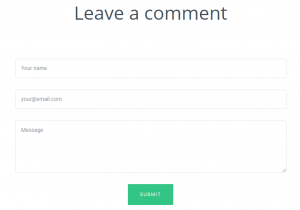Enterprise service management (ESM) is often introduced as the solution to an organization’s problems but is met with disappointment or frustration from staff because it’s just IT service management under another name. In fact, ESM encompasses IT service management (ITSM), but also a lot more.
The ultimate goal is to have one central hub for all services, both internally and externally to an organization. If you are an employee, this may mean that you go to one place to get support for IT, ask an HR question, get your security badge renewed, and even request a projector and a conference room. One-stop. This is true enterprise service management.
But from an IT perspective, behind the scenes, there is more to it. An IT technician needs to provide the service request and management mechanism, but also support for the full ITIL framework – which goes from incident and problem management through to change management, release management, asset discovery and asset management. The backbones of IT are using the ITSM platform to manage the entire operation and infrastructure, including projects, release roll-outs, upgrades, and more.
It’s important to understand that ESM is completely separate from ITSM – in other words, you can’t just take an ITSM platform and slap the name ESM onto it. However, on a high level, ITSM has absolutely paved the way for ESM by highlighting the importance of one enterprise portal, one knowledge base, and one underpinning automation and workflow engine.
Keep reading to learn about ITSM, how it paved the way for ESM, and how each of these concepts has shaped the modern world of work.
It often starts with ITSM – but be careful!
Too many times, the IT team will decide to introduce ESM – a great way to get rid of many point solutions and to provide the user base with a one-stop service. However, the vernacular must change for this to work.
Think about something like “Submit Ticket.” This works for IT. But if the nature of the request is to renew your parking permit, then the button needs to say “Submit Parking Permit Renewal.” This sounds simple and obvious, but it is not always done this way, which ultimately can cause undue friction and lagged adoption.
Equally, a basic ticketing platform will never be enough for IT Service Management (ITSM). Here, you need to have not only the front-end portal and the knowledge base, but also a suite of tools for managing the entire work output. Technician queues, SLA management, change management, a way to discover and track assets – all of this needs to be in place to follow the ITIL framework.
That’s why modern businesses have adopted a service management approach, known as IT Service Management, or ITSM. Via ITSM, IT departments across industries have developed standardized processes for delivering high-value, user-centered IT services.
The goals of ITSM
At its core, ITSM was developed as a way to focus on service over systems. The goals of ITSM are thus to provide value to customers by focusing on the experience of the end-user.
Good ITSM usually consists of the following:
- A functioning, user-friendly portal for creating and managing “tickets” for problems that need solving. Think of a time you’ve filled out an online request form on a service provider’s webpage. These kinds of forms go into filing systems from which IT specialists can work through customer issues.
- A knowledge base that consolidates information about the services a company provides, including resources to help users troubleshoot their own problems – often referred to as “self-service.” You’ve experienced this if you’ve ever looked at, say, the FAQ page of your computer’s operating system to figure out how to troubleshoot a minor problem.
- Standardized processes for resolving tickets, creating/revising resources in the knowledge base, and improving systems based on accumulated knowledge about user experience.
- Proper change management to ensure that as you roll out new software and hardware, dependencies are tracked and outages are not created.
- Release management to plan and execute the rollout of new patches, releases, and even net new technology solutions.
- Asset discovery/management/CMDB to ensure that you know where your assets are, how they are configured, and that they are managed in one central hub where tickets can be created.
- Project management to keep track of resources, timelines, and budgets. At any given time, an IT department could easily be managing 400-600 projects, which can be daunting as it is often the same resources working on tickets.
- SLA tracking to keep track of your work output and adhering to agreed upon SLAs is a big part of how IT will be viewed in the organization.
These pillars of ITSM create the necessary conditions for constant improvement, one of the central tenets of ITSM. ITSM allows companies to store records of problems and solutions in one place. Those records can then be converted into knowledge that informs self-service resources while also helping service providers improve their services over time.
Beyond IT: How to turn ITSM on its side for ESM
If you have a working understanding of ITSM, you’ll have no trouble understanding enterprise service management, or ESM. However, it is vital that IT does not take ITSM and simply shove it into each department – each group needs a purpose-built solution. Marketing will need solutions to track events, content development cycles, and campaigns. Facilities need to track work orders and preventative maintenance and calibrations. Human Resources need to create onboarding/offboarding workflows and an easy way to update benefits information. Simply taking an ITSM platform and trying to duplicate it in each group without the tailored approach will not work.
ESM also needs to be easy. Each department needs to be able to ideate and create their own service solution without a dependency on IT. Codeless is what makes it work.
For example, if Marketing wants to add a new service to the catalog, or a new request type, or wants to create new content in the knowledge base, they should be able to do this without the assistance of IT resources. The goal is that the ESM platform is easy to use, own, and operate.
ESM aims to provide value to customers via standardized processes and an ever-improving knowledge base. As such, good ESM provides:
- Ease of use – Each department needs to be able to manage their own service requests, content, and workflows without the help of IT resources.
- Dashboards – A specific view for each user type is helpful. If you are managing events and projects, you may want to have a specific view of that versus someone managing work orders for facilities or onboarding requests in HR.
In short, ESM gives companies the tools and mechanisms they need to ensure they’re solving customer problems efficiently and productively.
The future of ESM is bright. The digital transformation helped expand the scope of ITSM into ESM. As enterprise services went digital, ITSM principles became more relevant and useful to broader enterprise service management. Now that more people than ever are working remotely and depending on digital technology for everything from their jobs to grocery shopping, it’s clear that the trend toward better ESM will only continue.
Business & Finance Articles on Business 2 Community
(29)






